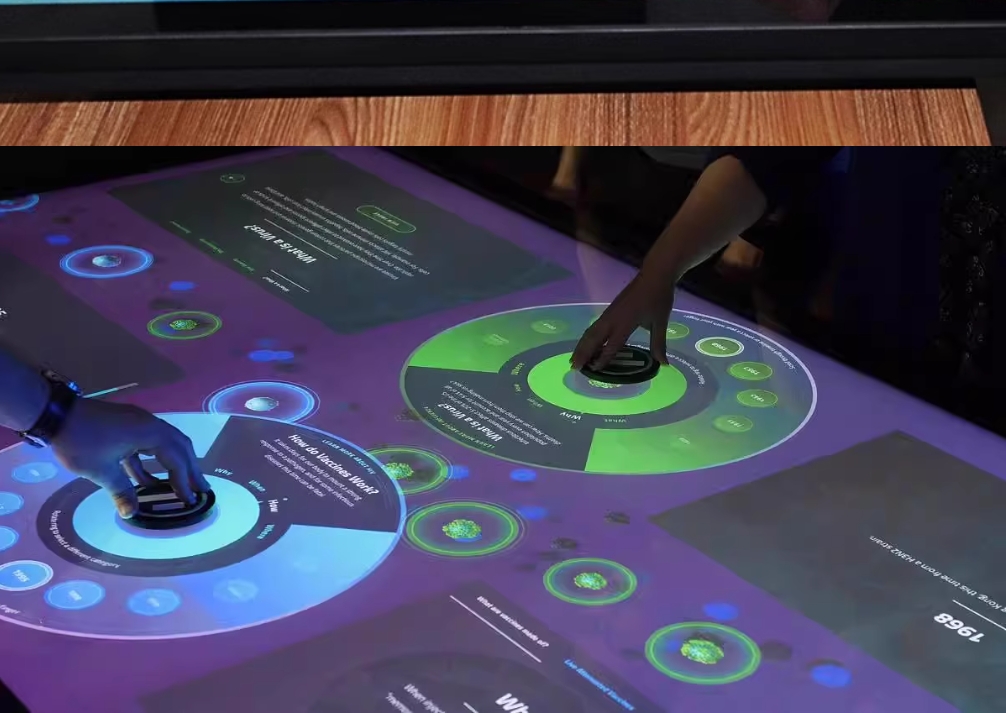As the digital revolution sweeps across the globe, the exhibition industry is undergoing a fundamental transformation—from unidirectional displays to multi-dimensional, interactive spaces. The once-groundbreaking “point and touch the screen” mode is now struggling to satisfy the public’s hunger for deeper, more meaningful, and immersive experiences. With ongoing advancements in intelligent recognition technologies, full-field perception is quietly dismantling the boundaries of physical interaction, turning digital narratives into hands-on encounters and making exhibition halls smarter, more engaging, and infinitely adaptable.

The Evolution of Interactive Technology
From Single-Touch to Intelligent Perception
Single-touch technology revolutionized early interactive experiences by letting visitors tap, click, or swipe their way through content. While effective, it is essentially a one-way instruction—human to device—often limited to flat, two-dimensional surfaces.
The integration of computer vision, LiDAR, and multi-modal sensors has changed the game. Today’s smart recognition technology can:
- Capture visitor location, movement, gestures, and even emotional responses in real time
- Leverage spatial positioning and environmental awareness algorithms for context-sensitive reactions
- Weave all sensors together into an intuitive, responsive network across the entire venue
This next-generation framework breaks out of the touchscreen box, creating exhibition experiences that are fluid, observational, and aware.
Interactive Tables: Innovative Object Recognition
Beyond the Touchscreen — The Smart Recognition Table
The rise of the object recognition table signals a true paradigm shift in exhibition technology. Unlike conventional touch panel displays, the smart table:
- Uses high-precision sensors and object recognition algorithms
- Creates a full-field, 3D sensitive environment across its surface
- Instantly identifies physical objects’ type and location when placed on the table
- Dynamically projects related digital information, animations, or 3D models onto the surface
How It Works
When a user places a module—or any recognized object—on the table:
- Embedded sensors analyze its physical characteristics and exact coordinates
- The system’s algorithm matches and pulls relevant content from its database
- The tabletop becomes a merging point of physical and digital interaction, visualizing data or storytelling in real time
Dynamic, Multi-Modal Interactivity
Interaction is no longer limited to finger taps—hands, objects, and even proximity now all trigger different forms of digital feedback.
- Collaborative Discovery: Multiple users can place various items simultaneously, generating linked content and group learning
- Dynamic Visualization: Data moves, expands, and responds in real time for a more engaging exploration
- Personalized Paths: Each interaction can be adapted to the user’s choices or roles, deepening user agency and impact
Redefining the Human–Object–Space Relationship
Traditional exhibition designs display objects and digital content in separation—physical artifacts here, information screens there. In the new paradigm, “the object is the interface.”
Applications in Science and Commerce
- Educational Science Centers: Place a fossil model on the recognition zone, and instantly see evolutionary timelines and 3D anatomical projections.
- Corporate Showrooms: Set a product on the table, and detailed stats, manufacturing stories, and use cases materialize around it for rich, immersive storytelling.
This convergence blurs the boundaries between the tangible and intangible, transforming static showpieces into living, interactive narratives.
Versatile and Customizable: Multitude of Applications
One standout advantage of object recognition tables is their modular, highly adaptable design:
- Education: Enables group learning and collaborative recognition of many objects, perfect for classrooms and learning labs.
- Business: Offers high-precision, real-time data tracking and analytics for complex product portfolios or workflow simulation.
- Cultural & Tourism Venues: Customizable surface shapes accommodate themed exhibits, art installations, or even city-planning sandtables for immersive planning and storytelling.
This versatility frees technology from traditional frameworks, enabling creative layouts in children’s science museums, corporate lobbies, art spaces, and more.
The Impact on Modern Exhibition Design
The continued development of interactive recognition technology perfectly aligns with the rising role of exhibition venues in city development, corporate branding, and cross-cultural engagement. As more venues turn to smart tables and intelligent spaces, they can expect:
- Enhanced visitor engagement through tactile, engaging storytelling
- Deeper data collection on guest preferences for targeted content
- Greater adaptability to host both temporary and permanent exhibitions with ease
- Stronger brand and educational impact thanks to immersive and memorable experiences
Future Perspectives: Beyond the Screen
As the field progresses, AI, sensory fusion, and adaptive environments will push boundaries even further:
- Imagine tables recognizing not just objects, but user emotions, skill level, and intent
- Envision exhibition spaces reacting instantly to collective movement or crowd sentiment
- Look for next-gen applications where visitors “write” their own digital stories—simply by interacting with their environment
Smart recognition is transforming the very fabric of exhibition interaction, ensuring that physical and digital worlds blend seamlessly.
Conclusion
From single-point touch to full-field perception, smart object recognition tables are ushering in a new era of interactive design—one where every surface, every object, and every user action can influence, direct, and enrich the exhibition experience. As digital technologies continue to develop, these immersive systems will become vital to the future of learning, branding, and cultural communication—making venues smarter, more engaging, and truly unforgettable.







